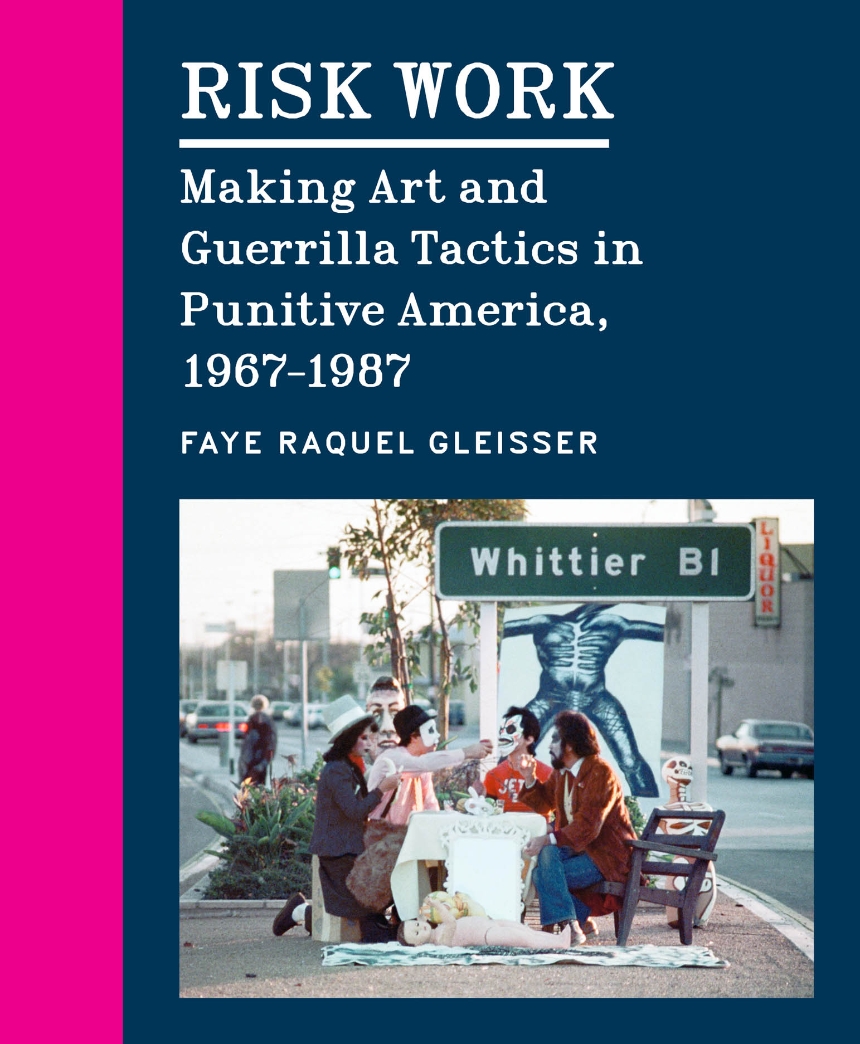Risk Work
Making Art and Guerrilla Tactics in Punitive America, 1967–1987
Risk Work
Making Art and Guerrilla Tactics in Punitive America, 1967–1987
As US news covered anticolonialist resistance abroad and urban rebellions at home, and as politicians mobilized the perceived threat of “guerrilla warfare” to justify increased police presence nationwide, artists across the country began adopting guerrilla tactics in performance and conceptual art. Risk Work tells the story of how artists’ experimentation with physical and psychological interference from the late 1960s through the late 1980s reveals the complex and enduring relationship between contemporary art, state power, and policing.
Focusing on instances of arrest or potential arrest in art by Chris Burden, Adrian Piper, Jean Toche, Tehching Hsieh, Pope.L, the Guerrilla Girls, Asco, and PESTS, Faye Raquel Gleisser analyzes the gendered, sexualized, and racial politics of risk-taking that are overlooked in prevailing, white-centered narratives of American art. Drawing on art history and sociology as well as performance, prison, and Black studies, Gleisser argues that artists’ anticipation of state-sanctioned violence invokes the concept of “punitive literacy,” a collectively formed understanding of how to protect oneself and others in a carceral society.
264 pages | 12 color plates, 39 halftones | 7 x 8 1/2 | © 2023
Art: American Art, Art--General Studies
Law and Legal Studies: Law and Society
Political Science: Race and Politics, Urban Politics
Sociology: Race, Ethnic, and Minority Relations
Reviews
Table of Contents
1 Hit-and-Run Aesthetics: Asco, Chris Burden, and Relational Geographies of Risk, 1971–1976
2 Deputized Discernment: Adrian Piper, Jean Toche, and the Politics of Antiloitering Laws, 1974–1978
3 Rethinking Endurance: Pope.L, Tehching Hsieh, and Surviving Safety, 1978–1983
4 “¿Why Won’t You See Us?”: The Guerrilla Girls, PESTS, and the Limits of Anonymity, 1985–1987
Epilogue. At the Edges of Guerrilla
Acknowledgments
Notes
Bibliography
Index
Awards
Association for the Study of Arts of the Present: ASAP Book Prize
Won
National Museum of American Art: Charles C. Eldredge Prize
Won
College Art Association: Charles Rufus Morey Award
Shortlist
